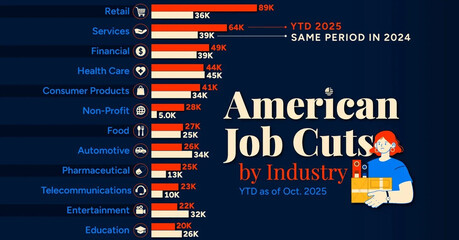
UNIVERSITY PARK, Pennsylvania – In 2024, 19 people died in farm-related accidents in Pennsylvania. While this number is a decrease from the previous year, it still highlights the inherent dangers of agricultural work. According to data released by researchers at Penn State University's College of Agricultural Sciences, this figure is lower than the average of 28 fatalities over the past 25 years. However, the annual fluctuation in fatalities underscores the need for continuous vigilance regarding agricultural safety. Furthermore, injuries are not consistently tracked, suggesting that the reported numbers may not fully reflect the actual risks in agricultural settings.
The Importance of Agricultural Safety Research
The Penn State Agricultural Safety and Health Program, part of the Department of Agricultural and Biological Engineering at Penn State University, publishes the "Pennsylvania Farm Fatal Injury Summary" annually. This report provides crucial data for researchers and educators to identify risk factors associated with agricultural production, which in turn informs the development of educational programs and materials.
Florence Becot, lead faculty member for the Penn State Agricultural Safety and Health Program, emphasized the wide range of fluctuations in farm fatality statistics. "The lowest number of fatalities in the past 25 years was 16 in 2021, but it reached 39 in 2020 and 37 in 2022," she stated. Becot added that actual fatality numbers might be underestimated because coroner reports do not always clearly specify the cause and location of death.
Accident Locations and Victim Demographics
The 2024 fatalities occurred in 16 counties across Pennsylvania. Notably, Lancaster and York counties in southeastern Pennsylvania reported more than one fatality, indicating a need for particular attention to agricultural safety in these areas.
Similar to past trends and national data, this year's fatalities disproportionately affected young children and older adults. A quarter of all fatalities involved children under 10 years old, and nearly half were individuals aged 65 or older. Additionally, over 80% of the deceased were male, a trend consistent with previous statistics.
74% of the 2024 fatalities were engaged in farm work at the time of injury, and all but one were regular farm workers. However, five children under 10 years old, accounting for a quarter of the total fatalities, were not engaged in farm work. Four of these children suffered fatal injuries from farm equipment, and one from an animal. Becot stressed that "supervising children and keeping them away from the most dangerous areas are essential steps to reduce fatalities among young children." At the same time, she acknowledged the reality that many families prioritize having their children on the farm or face childcare challenges, implying the need for a multifaceted approach to child protection in agricultural environments.
Major Causes of Fatalities and Preventive Measures
Agricultural Vehicles and Industrial Equipment: More than half of the 2024 Pennsylvania farm fatalities were associated with off-road and industrial vehicles. Specifically, seven fatalities resulted from injuries related to agricultural tractors, with at least five of these being rollover accidents. Other causes included skid loader rollovers and being run over by forklifts. Tractor rollover fatalities most frequently occur with tractors lacking Rollover Protection Structures (ROPS). In Pennsylvania, a partnership with the National ROPS Rebate Program offers financial assistance to farmers who wish to retrofit their tractors with ROPS. Interested individuals can contact Peggy Newel (png1@psu.edu), the Rollover Protection Structures coordinator for Penn State Extension, for assistance.
Collisions with or Entrapment by Equipment and Objects: Approximately a quarter of all fatalities were due to collisions with machinery, or entrapment from silo collapses or falling trees. This highlights the critical need for maintaining a safe distance from equipment and exercising extreme caution regarding the surrounding environment in agricultural settings.
Animal-Related Accidents: The third most common cause of fatalities was animal-related accidents, accounting for 12% of the total. This included a bull attack and a child being dragged by a horse. Adhering to safety protocols when handling animals and understanding animal behavior are crucial for the safety of farmers and their families.
Other Causes: Additionally, one fatality was due to smoke inhalation, and another was due to burns.
Agricultural Safety Education and Support Programs
Penn State Extension offers extensive resources to promote the safety and health of those involved in agricultural production. The Agricultural Safety and Health website features articles, videos, courses, and other materials on various topics, including animal handling, farm equipment safety, disaster preparedness, personal protective equipment, and child safety. The team also regularly collaborates with various organizations to provide presentations and training.
Currently, the Penn State Agricultural Safety and Health Program team is conducting a survey to better understand safety and health issues in agriculture and identify preferred solutions. Farmers, farmworkers, and their families can contribute to enhancing agricultural safety by participating in this 10-minute survey.
The Importance of Agricultural Child Safety Education
Becot particularly emphasized the importance of child safety education on farms. She noted, "Teaching children about farm hazards and setting clear boundaries can help protect them from dangers such as manure pits, grain bins, or areas where tractors or equipment are being used." She also recommended that farm parents needing assistance finding and affording childcare services refer to Pennsylvania's Compass website. Child fatalities in agricultural settings are a serious concern, making parental supervision and education for children to recognize and avoid dangers essential. This is not only directly linked to agricultural productivity but, more importantly, is a fundamental effort to protect precious lives.
The Pennsylvania Farm Fatality Report once again serves as a reminder that agriculture remains a high-risk occupation. Despite the fluctuating statistics, the concentration of accidents among young children, older adults, and males underscores the need for tailored safety education and support for specific vulnerable groups. Adhering to safety guidelines when using agricultural equipment, installing safety devices like ROPS, exercising caution when handling animals, and above all, continuous attention and education regarding child safety on farms will help minimize risks in agricultural settings and create an environment where everyone can work and live safely.
[Copyright (c) Global Economic Times. All Rights Reserved.]




























